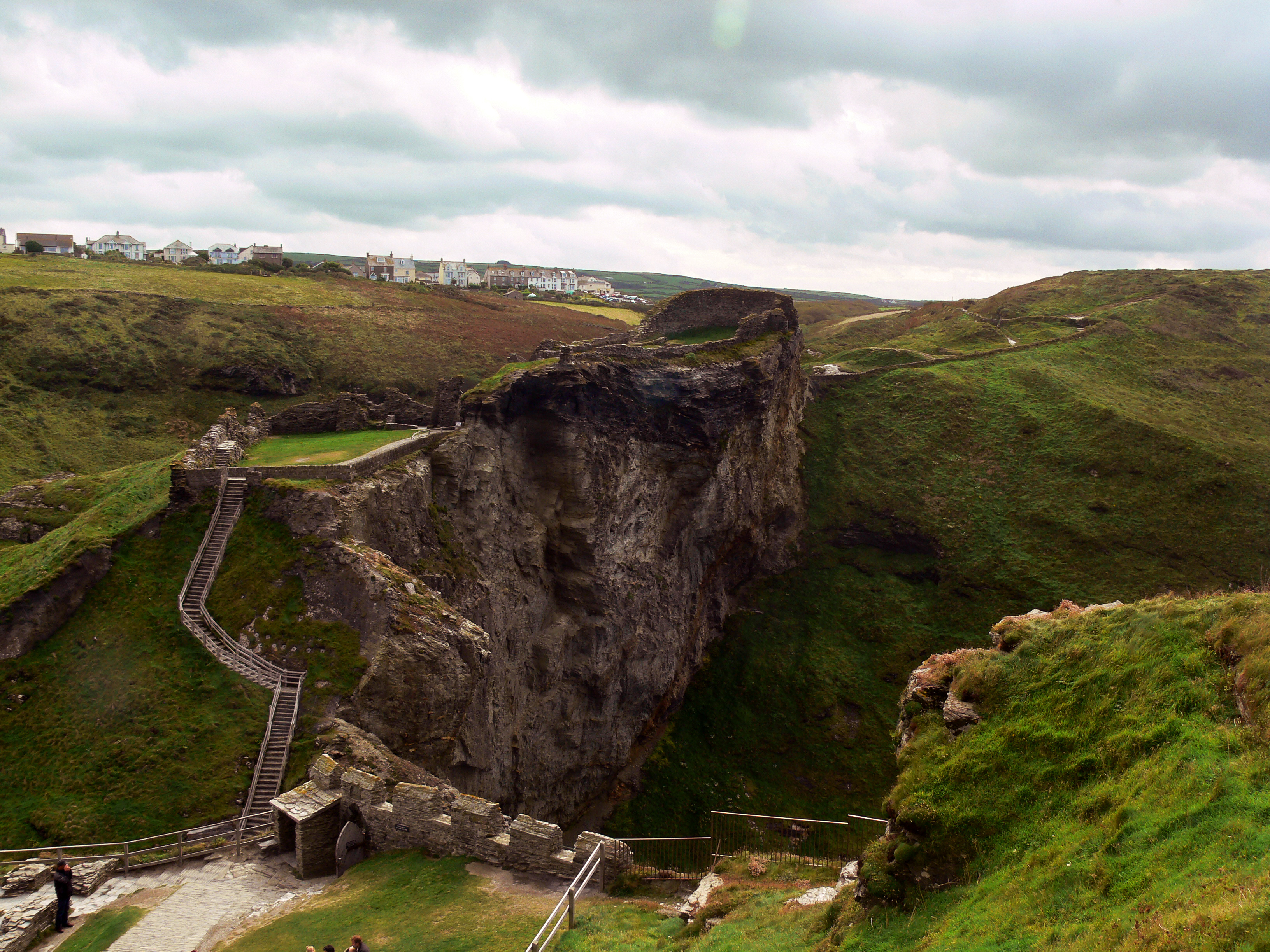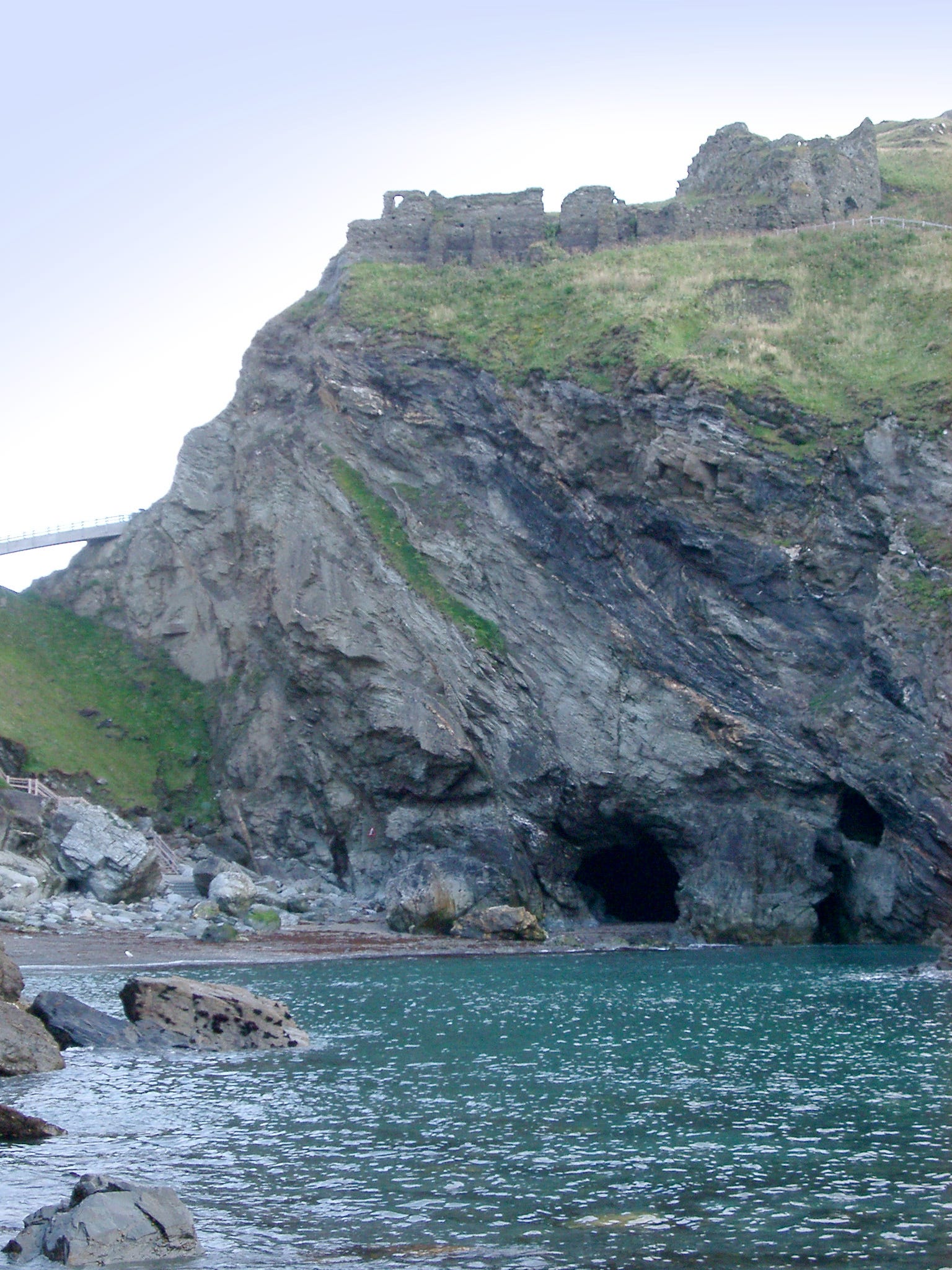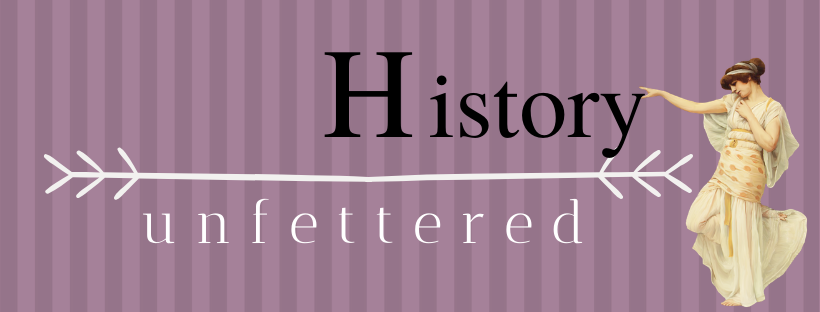The Man Who Rebuilt King Arthur’s Castle

It’s May of the year 1233 and Richard, Earl of Cornwall, younger brother of King Henry III, is getting ready to purchase some land. In exchange for three manors, he will be the lucky owner of a small parcel high on the hills of Cornwall’s rugged coast. The island of Tintagel is an unfriendly piece of headland connected to the mainland by a narrow land bridge.
Why exchange three fine manors for something so inhospitable? Because this seemingly godforsaken plot of land has a very special history. As wet and rocky as it is, every breath of wind is filled with magic and enchantment. You see, this is thought to be the very spot of King Arthur’s conception, and 1233 is a time of Arthurmania.
A Bit of Arthurian History
The legend of Arthur goes back to 549 AD, but the medieval historian Geoffrey of Monmouth was the guy who fanned the flames of his popularity during the middle ages. Old Geoffrey wove a spicy tale of desire and wizardry. It centers on the great king of England, Uther Pendragon, and his lust for a woman named Ygerna.
Now, Ygerna happened to be the wife of one of his barons, Gorlois of Cornwall. In order to protect her from the lovesick king, Gorlois safely tucks his beloved wife behind the walls of Tintagel Castle. Thinking her safe, he leaves. After all, the place is impenetrable. What’s there to worry about? Uther, however, is not one to give up. Enter his right-hand man, the wizard Merlin:
Sure, we could bust through the walls with lots of fanfare and explosions, but why bother when I can just magically change you into the image of your lady fairs absent husband, said Merlin.
And so a few ingredients and magic words later, Merlin hands his king a potion which will transform him into the spitting image of Gorlois.
Honey, I’m home, Uther announces waltzing right through the castle doors and into Ygerna’s bed. And in the enchantment of that glorious night, she conceived the future King Arthur.

Who was this Wealthy Earl?
Richard, Earl of Cornwall, was the son of that infamous King John. You know, Richard the Lionheart’s brother? The one made famous by all those Robin Hood stories? The guy who basically collapsed the whole Angevin Empire? Now although Richard was never to become king, he was pretty darn successful. In fact, he was one of the wealthiest men in Europe. Not only was he Earl of Cornwall and Count of Poitou but later on in 1256, he became King of Germany, although that was really just a title.
Now, the Earl was a man of the world, and he knew his way around the literature of the day. He most certainly knew of the Legend of Arthur, everyone in his circle was well acquainted with it. Using the legends and myths about Arthur was a popular way for kings to try to authenticate their claim to the throne.
Riding on the Coat-tails of Arthur
The Normans especially loved Arthur. Just like them, he was said to have defeated those pesky Anglo-Saxons. Perhaps by building on the site of Arthur’s birth, he might give the impression he was the true heir of the famous king. This is highly likely since the castle was built in an antiquated style. The architecture was a far cry from what you would assume would be used for a military stronghold. Instead, it gave off more of a romantic theme park vibe.
Incidentally, Earl Richard wasn’t the only one in his family to claim a connection to King Arthur. Long before Richard ever thought of building his castle, his dad, King John, was in a fight for the crown. His rival? Arthur I, Duke of Brittany, a.k.a. his nephew. His mother specifically chose the name Arthur to associate the lad with the legend. The youth had a strong claim to the throne since his dad was John’s older brother, Geoffery. (He was dead by this time.) John captured and imprisoned Arthur in 1202 and was suspected of drowning him in a fit of drunkenness.
Home Sweet Home?
The Earl’s castle included a great hall, kitchen, and chambers on the headland, the narrow strip that juts out into the sea. The outer bailey, gatehouse, and ancillary buildings were on the mainland. It’s thought that a bridge of some sort connected the two.
Little is known about how much use the Earl got from his castle. After all, he was certainly a busy fellow. He went on crusades in 1240, then did the King of Germany thing in 1257. Probably he didn’t get to spend too much time in Cornwall. This might actually have been for the best. The structure was rebuilt several times between 1230 and 1540. Garderobes (aka toilets) especially fell into disrepair due to their precarious position on the edge of the cliff.
After the death of the Earl, no one was really interested in keeping up the castle. Eventually, it was given to the county sheriff, who used parts of it as a jail. It continued to erode, however, and finally, it was left to turn to ruins.

Tintagel In the Modern Era
The Earl might not have managed to impress the people of his day, but he was certainly successful in linking his name with Arthurian Legend. The castle came into the public eye once again in the Victoria era when interest in chivalry and its accompanying values were renewed. Just last year the English Heritage Trust rebuilt the bridge between the island and mainland, allowing visitors to get a small sample of what life there might have been like all those years ago.
Still, the question remains was this piece of land really associated with King Arthur? Not only is there a lack of archeological evidence to support the presence of Arthur at Tintingel, but there’s no evidence to even support his existence. More than likely Geoffrey of Monmouth probably used a variety of sources including folklore, chronicles, and bardic tales to create the ultimate hero for medieval men to emulate.
Sources:
https://www.historic-uk.com/CultureUK/Camelot-Court-of-King-Arthur/
http://www.lordsandladies.org/legend-of-king-arthur.htm
https://www.britainirelandcastles.com/England/Cornwall/Tintagel-Castle.html
https://www.english-heritage.org.uk/visit/places/tintagel-castle/tintagel-bridge/Focus On Learning
Related Posts
King Arthur, Excalibur, and an Italian Saint
One night in the year 1180 in a little town outside Siena, a knight by…
April 11, 2019


Leave A Comment